In this article, we’ll introduce you to some of the most effective cover crops for fall, exploring their incredible benefits and unique characteristics. Whether you’re a seasoned gardener or just starting out, you’ll discover how these green allies can take your garden to the next level. Read on to unlock the secrets of thriving fall cover crops!
What is the Best Cover Crop to Plant in the Fall?
Selecting the best cover crop for your fall garden often depends on your specific goals, local growing conditions, and the types of plants you intend to cultivate in the next growing season. Some popular options include:
Vetch (Vicia sativa): Known for its ability to fix nitrogen in the soil, vetch is an excellent choice for those looking to enhance soil fertility. It thrives in cooler temperatures and creates a dense mat that suppresses weeds.
Crimson Clover (Trifolium incarnatum): This beautiful legume not only enriches the soil with nitrogen but also attracts pollinators and beneficial insects. Crimson clover is particularly useful in regions with mild winters, as it can remain green throughout the season.
Rye (Secale cereal): Cereal rye is a hardy cover crop that excels in preventing soil erosion and weed germination. It has deep roots that break up compacted soil and is often utilized for its biomass, which can be turned under to add organic matter to the soil.
Winter Peas (Pisum sativum subsp. arvense): Excellent for nitrogen fixation, winter peas thrive in cold weather and can provide a significant boost to soil fertility. They can be sown alone or mixed with other species to diversify benefits.
Choosing a combination of these crops can maximize benefits, contributing to a robust ecosystem in your garden while also addressing specific needs such as nutrient deficiency or soil structure improvements.
Benefits of Fall Cover Crops
Planting cover crops in the fall offers an array of benefits that far exceed the initial investment of seed and labor. These benefits include:
Soil Erosion Control: Cover crops develop extensive root systems that help bind soil particles together. This is crucial in preventing soil erosion during winter rains and heavy snowmelt, which can wash away topsoil.
Improved Soil Structure: As cover crops grow and decompose, their organic matter helps to enhance soil structure, leading to better water infiltration and aeration. This process significantly promotes root health for future crops.
Pest and Disease Management: Certain cover crops can interrupt pest and disease cycles by acting as decoys, reducing the population of harmful insects and pathogens that might otherwise thrive in bare soil.
Nutrient Cycling: The interplay between root systems and soil microorganisms boosts the availability of essential nutrients. For instance, legumes can capture atmospheric nitrogen and release it into the soil, benefiting subsequent crops.
Weed Suppression: Dense cover crops create a competitive environment for weeds, inhibiting their growth and establishment. This natural weed control can reduce the need for herbicides and manual weeding, saving time and resources.
Incorporating fall cover crops into your gardening routine not only enriches the soil but cultivates a more resilient and sustainable garden ecosystem.
Winterkill vs. Frost-Tolerant Cover Crops
When selecting cover crops for your fall garden, understanding the differences between winterkill and frost-tolerant crops can shape your growing strategy effectively.
Winterkill Cover Crops: These are species that cannot withstand freezing temperatures and will die back when the mercury drops. Common examples include buckwheat and some varieties of oats. While winterkill crops do not survive the cold, they provide valuable benefits before succumbing to frost. They add organic material when tilled under and help break pest cycles, making them advantageous in regions with harsh winters.
Frost-Tolerant Cover Crops: In contrast, certain cover crops are designed to withstand freezing temperatures, allowing them to provide benefits through the winter months. Species such as clover, rye, and vetch can continue growing or maintain their structure even as conditions become chilly. These crops not only protect the soil throughout winter but also may offer additional growth in early spring, preparing the soil for planting sooner than winterkill options.
Choosing between these two categories involves considering your winter climate and your garden’s long-term goals. If you’re in a milder region, frost-tolerant crops might be the better choice for maximal soil protection and nitrogen fixation. However, in areas with extreme cold, winterkill varieties can still deliver important benefits if carefully managed.
Best Fall Garden Cover Crops
Oats (Avena sativa)
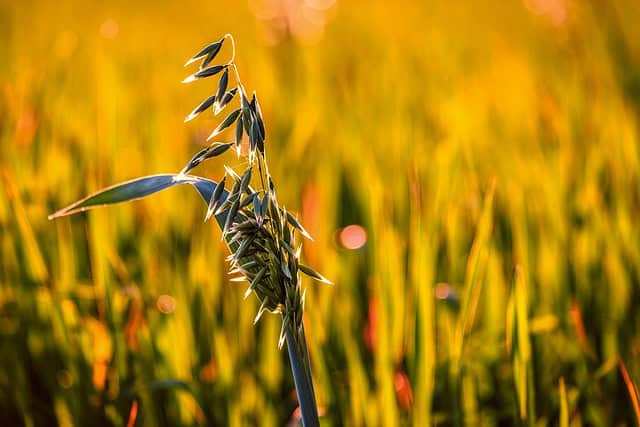
Oats are a versatile cover crop choice that excels in fall planting and provides multiple benefits to the soil. Typically sown late in the summer or early fall, oats germinate quickly and establish a dense ground cover, creating a protective layer that shields the soil from erosion over the winter months. Here are some compelling factors that make oats a favorable choice:
Rapid Growth: Oats are known for their swift germination and growth, often reaching maturity in three to four weeks. This rapid establishment helps suppress weeds by outcompeting them for sunlight, water, and nutrients.
Organic Matter Addition: Once oats succumb to winterkill, their biomass can be turned into the soil, enhancing its organic matter content. As the oat residues decompose, they improve soil structure, fostering better aeration and drainage.
Soil Fertility: Although oats are not nitrogen-fixing like legumes, they do scavenge leftover nitrogen from the soil and prevent it from leaching away during the winter. This helps retain essential nutrients for the subsequent planting season.
Disease Suppression: The fibrous root system of oats can also help improve soil health by increasing microbial activity and suppressing diseases like root rot, particularly in areas where certain pathogens may persist.
For gardeners looking to build up their soil quickly before winter arrives, oats are an excellent option that offers both immediate benefits and long-term enhancements to soil quality.
Winter Rye (Secale cereale)
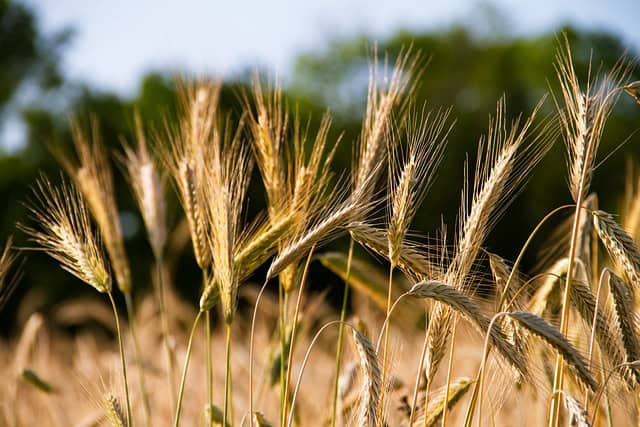
Winter rye is one of the hardiest cover crops, making it a go-to choice for gardeners in colder climates. Renowned for its resilience and myriad benefits, winter rye offers exceptional protection and nourishment for the soil. Here are some notable attributes of this remarkable crop:
Deep Root System: Winter rye develops an extensive root system that penetrates deeply into the soil. This helps to break up compacted layers and improves soil drainage, aeration, and overall structure, essential for healthy plant roots in the following growing season.
Effective Weed Suppression: With its rapid growth rate, winter rye establishes a thick canopy that chokes out weeds, minimizing competition and reducing the need for herbicides. Its allelopathic properties additionally contribute to inhibiting weed seed germination.
Frost-Tolerance: Unlike many cover crops, winter rye can survive extremely low temperatures, often remaining green and actively growing through the winter months. This allows it to provide protection against soil erosion and nutrient leaching, even during harsh weather conditions.
Nutrient Recycling: As winter rye grows, it captures nutrients from deeper soil layers and prevents leaching. When tilled under in spring, it releases nitrogen and other nutrients back into the soil profile, providing a natural fertilizer effect for subsequent crops.
For gardeners aiming to establish a resilient backbone in their soil, winter rye is an outstanding choice that ensures ongoing protection and vitality throughout the winter months.
Winter Wheat (Triticum aestivum)

Winter wheat is often thought of as a staple crop, but its role as a cover crop can be equally impactful for home gardeners. With its ability to thrive in cooler temperatures, winter wheat provides essential benefits that enhance soil quality and overall garden health. Consider the following advantages of incorporating winter wheat into your fall gardening strategy:
Soil Erosion Prevention: With its robust growth habit and extensive root system, winter wheat is highly effective at stabilizing the soil surface. This is particularly beneficial on sloped areas prone to erosion, where its presence can mitigate soil loss during winter rains and runoff.
Improved Soil Structure: The transition of winter wheat from growth to decomposition adds organic matter to the soil, which improves its structure and promotes the health of soil ecosystems. Enhanced soil structure improves water retention, aeration, and the habitat for beneficial organisms.
Nutrient Capture and Release: Similar to winter rye, winter wheat efficiently captures nutrients during its growth phase. The process of tilling in the spring releases locked-up nutrients, making them available for future crops. Additionally, it can enhance the C:N ratio of soil as it decomposes, fostering improved microbial activity.
Versatility: Winter wheat can serve dual purposes; it can be harvested if grown for grain but can also fulfill the role of a cover crop. This makes it adaptable for various gardening styles and objectives, whether for soil enhancement or as part of a more extensive cropping system.
Crimson Clover (Trifolium spp.)
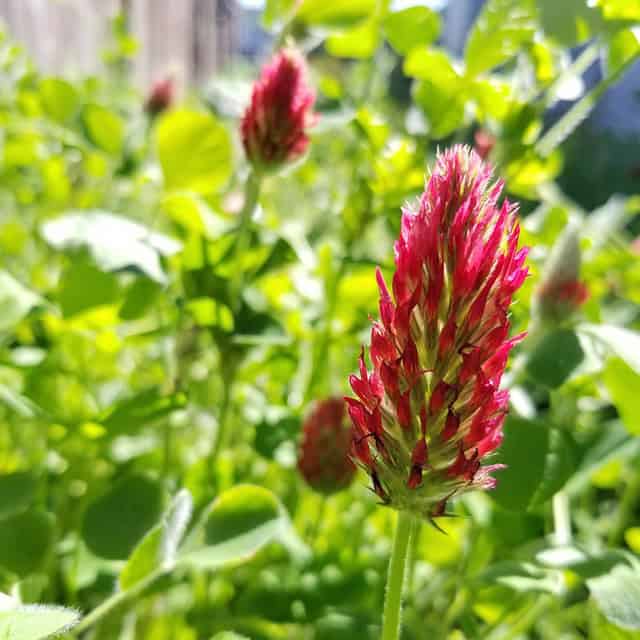
Crimson clover is a vibrant, colorful legume that serves as an excellent summer and fall cover crop. It is particularly popular among gardeners looking to improve soil fertility while adding beauty to the landscape. Here are some compelling reasons to incorporate crimson clover into your fall garden:
Nitrogen Fixation: As a legume, crimson clover has a natural ability to fix atmospheric nitrogen in the soil, thanks to symbiotic bacteria that inhabit its root nodules. This process enriches the soil, providing vital nutrients for subsequent crops, reducing the need for synthetic fertilizers.
Attractive Pollinator Habitat: Crimson clover produces striking red flowers that bloom in late spring. This flowering period makes it an excellent source of nectar for honeybees and other pollinators. By incorporating crimson clover, gardeners can support local biodiversity and foster a thriving pollinator community.
Soil Protection: The dense foliage of crimson clover acts as a protective cover for the soil, preventing erosion and reducing runoff. Its roots help bind the soil particles together, thereby enhancing soil structure and minimizing compaction.
Winter Hardiness: While it is not frost-hardy, gardeners in mild climates can sow crimson clover in the fall and expect it to survive the winter. In colder regions, it can be planted in early spring as a valuable winter annual, providing nutrient benefits and ground cover.
In summary, crimson clover is an aesthetically pleasing cover crop that enriches soil while simultaneously enhancing local ecosystems.
Hairy Vetch (Vicia villosa)
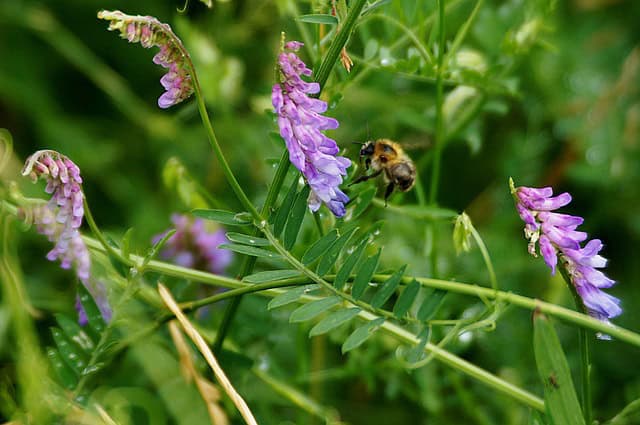
Hairy vetch is another remarkable legume often used in fall gardens for its health benefits to both soil and plants. It is a winter-hardy cover crop that can contribute to improved nitrogen levels and soil structure. Here are some of the unique characteristics of hairy vetch:
Highly Effective Nitrogen Fixer: Hairy vetch is known for its exceptional nitrogen-fixing capabilities, making it one of the most efficient cover crops for bolstering soil fertility. A mature crop can add significant amounts of nitrogen to the soil, benefiting subsequent plantings.
Resilient Growth: With its ability to thrive in a variety of soil types and conditions, hairy vetch establishes quickly and grows vigorously. Its extensive root system can penetrate deep into the soil, which helps to improve aeration and drainage.
Weed Suppression: The dense growth habit of hairy vetch provides natural weed suppression by shading out competing plants. This ability to reduce weed pressure can be particularly beneficial for organic gardeners seeking to minimize herbicide usage.
Biodiversity Promotion: Hairy vetch offers habitat and food for beneficial insects during its growth period. When it flowers, it attracts pollinators such as bees and butterflies, supporting a diverse garden ecosystem.
Decomposing Benefits: When incorporated back into the soil in spring, hairy vetch adds significant organic matter, improving nutrient cycling and enhancing overall soil health.
Incorporating hairy vetch into a fall cover crop strategy can lead to a robust, nutrient-rich environment for future plantings, promoting healing and sustainability in your garden.
Austrian Winter Peas (Pisum sativum)
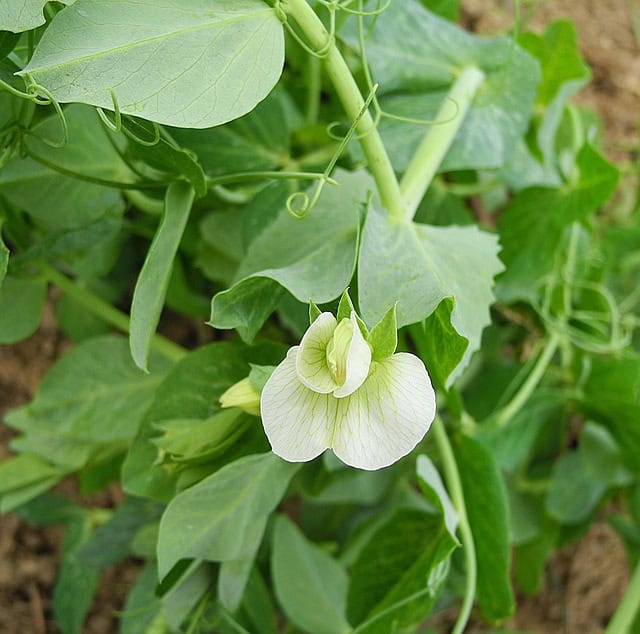
Austrian winter peas are another excellent choice for fall cover crops, known for their versatility and ability to enhance fertility in cooler climates. These tender annual legumes are distinct in their growth habits and benefits. Here’s what makes Austrian winter peas a valuable addition to your cover crop rotation:
Rapid Vigor: Austrian winter peas germinate quickly and establish themselves fast, creating a green cover that prevents soil erosion and qualifies as an effective weed competitor.
Nutrient Contributions: Similar to other legumes, Austrian winter peas are adept at fixing nitrogen, which they store within their root systems. Their biomass contributes valuable nutrients back to the soil when tilled under in the spring, enhancing fertility for upcoming planting seasons.
Cold Tolerance: Austrian winter peas can withstand frost, allowing them to grow throughout the winter in many regions. This frost tolerance ensures that gardeners can enjoy the benefits of a cover crop even in colder climates.
Self-Seeding Potential: When left to mature, Austrian winter peas can produce seeds that may self-sow in subsequent seasons, establishing a recurring nutrient cycle for future crops without the need for replanting.
Aesthetic Appeal and Soil Structure Improvement: Apart from their functional benefits, Austrian winter peas produce beautiful foliage and striking blooms. Their roots help to break up compacted soil, enhancing structure and improves water retention.
Sorghum / Sudangrass (Sorghum x drummondii)
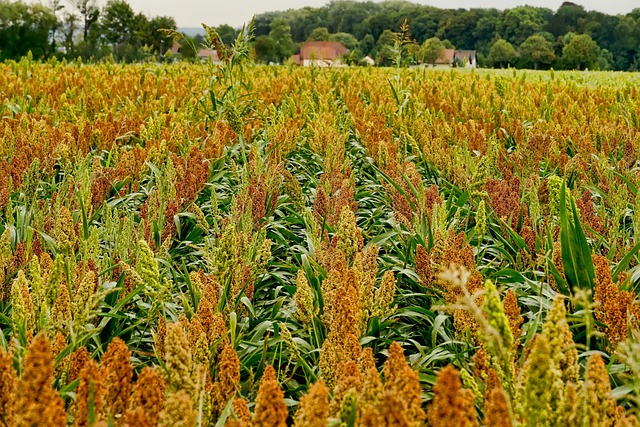
Sorghum/sudangrass is a hybrid cover crop renowned for its rapid growth and resilience, making it an excellent choice for gardeners seeking to improve their soil health quickly. This warm-season annual is particularly advantageous for a variety of reasons:
Exceptional Biomass Production: One of the standout features of sorghum/sudangrass is its ability to produce a large amount of biomass. This extensive growth creates a dense canopy that provides excellent ground cover, reducing soil erosion and suppressing weed growth.
Deep Root System: The root systems of sorghum/sudangrass can penetrate deep into the soil, breaking up compacted layers and enhancing water infiltration. This deep rooting not only improves soil structure but also helps access nutrients from deeper soil horizons.
Drought Resistance: Sorghum/sudangrass is particularly suited for regions with limited rainfall. Its drought tolerance allows it to thrive where other cover crops might fail, making it a reliable option for diverse climatic conditions.
Soil Fertility Enhancement: While not a nitrogen-fixing plant, sorghum/sudangrass contributes organic matter to the soil when terminated and decomposed. This organic matter enhances soil fertility, nutrient cycling, and overall microbial activity.
Pest and Disease Suppression: The thick growth habit of sorghum/sudangrass can deter certain pests by providing physical barriers. Additionally, its rapid growth can disrupt the life cycles of specific soil-borne pathogens.
Incorporating sorghum/sudangrass into your cover cropping strategy can lead to enhanced soil health and resilience, particularly in challenging growing conditions.
Barley (Hordeum vulgare)

Barley is a versatile cereal grain that also makes an effective cover crop for fall planting, widely appreciated for its resilience and numerous benefits. Recognized for its capability to improve soil quality, barley offers unique advantages:
Quick Establishment: Barley germinates rapidly and establishes quickly, providing ground cover that protects the soil from erosion and suppresses weed growth. Its ability to grow in various soil types makes it adaptable for different gardening situations.
Nutrient-Rich Residue: When incorporated back into the soil at the end of its growth cycle, barley contributes valuable organic matter. This organic residue enhances soil structure and improves nutrient-holding capacity, benefiting future plantings.
Disease Resistance: Barley can help in disease management due to its natural resistance to certain soil pathogens and diseases, leading to healthier soil and reducing the prevalence of harmful organisms.
Frost Tolerance: Barley exhibits good winter hardiness, allowing it to survive cold temperatures and continue to provide protective cover throughout the winter months. This frost tolerance ensures soil stability and nutrient retention during harsh weather conditions.
Water Efficient: Barley has impressive water use efficiency, making it an excellent choice for areas prone to drought. Its robust root system can access moisture from deeper soil layers, promoting plant health and resilience.
By incorporating barley into your fall cover cropping mix, you can enhance soil nutrition and improve overall garden health as you prepare for the next growing season.
Fall Cover Crop Blends
The practice of using fall cover crop blends is gaining momentum among gardeners looking to maximize the multifaceted benefits of cover cropping. By combining different species, gardeners can create tailored cover crop mixes that address a wider array of soil health and fertility goals. Here are some compelling reasons to consider planting cover crop blends:
Enhanced Biodiversity: Blends incorporate multiple species, promoting biodiversity in the garden. This diversity can bolster the resilience of the soil ecosystem, attracting beneficial insects and microorganisms that contribute to overall soil health.
Synergistic Benefits: Different cover crops contribute various nutrients and benefits to the soil. For example, a blend of legumes for nitrogen fixation paired with grasses for biomass production can create a balanced nutrient profile that enhances fertility and soil structure.
Root Diversity: Blending crops with different root structures—such as deep taproots and shallow fibrous roots—improves soil aeration, moisture retention, and nutrient accessibility, providing comprehensive benefits to the soil profile.
Weed Suppression: A diverse mix creates competition against weeds more effectively than single-species cover crops. The textured growth can outcompete unwanted plants, leading to more effective weed management.
Flexible Growth Cycles: Blended cover crops can be tailored to specific climate zones and growing conditions, allowing gardeners to adapt their choices based on seasonal variations and anticipated weather patterns.
Conclusion
As fall approaches, the importance of cover crops in maintaining and enhancing garden health becomes increasingly evident. From oats and winter rye to legumes like crimson clover and hairy vetch, each cover crop offers unique benefits that can significantly improve soil quality, suppress weeds, and promote biodiversity in our gardens.
Additionally, the inclusion of resilient options like sorghum/sudangrass and barley, along with the innovative practice of using cover crop blends, empowers gardeners to create a tailored approach that aligns with their specific growing conditions and goals.
By incorporating cover crops into your fall gardening strategy, you’re not just planting for the present; you’re investing in a healthier, more productive garden for future seasons.
Embracing cover crops leads to improved soil structure, enhanced nutrient availability, and a thriving ecosystem that benefits both plants and pollinators.
As you prepare for the cooler months ahead, consider how these diverse and resilient cover crops can work for you, paving the way for a sustainable gardening approach that nurtures the earth while providing bountiful harvests for years to come. Happy gardening!





